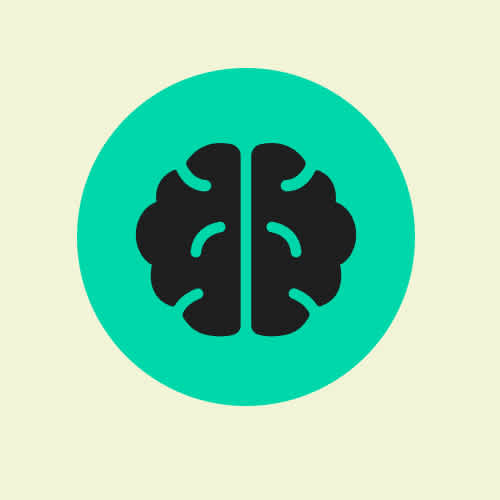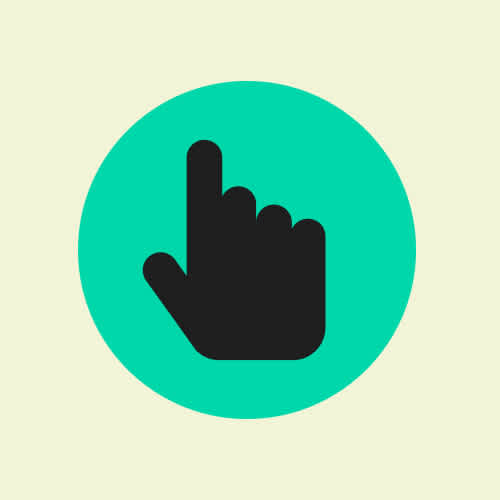Luke
Planner, VCCP
We All Need Web Accessibility
Steph Marques & Ed Hobson

We all need web accessibility
It's easy to fall into the trap of thinking that creating accessible websites and apps is about 'us and them' - helping distant people who you may never meet. However, let's consider all 5 areas of difference that apply to web accessibility:
Sight e.g. colourblind, visual impairment
Neurodiversity e.g. ADHD, dyslexia, autism
Hearing e.g. hearing loss, deafness, tinnitus
Touch or physical e.g. arthritis, broken arm, tremors, Parkinson’s, repetitive strain injury in hand/arm
Speech or language e.g. speech impairments, accents, English as a second language, non-English speaking
When looking at all of these areas, it's easy to arrive at a figure of at least 50% of the UK population having specific accessibility needs. Plus, there are many scenarios that anyone could find themselves in, where they'd have accessibility needs: driving, carrying a cup of coffee, sitting on a quiet bus - there's a reason why subtitles have boomed on social media!
So, we all need accessibility.

It's also a common mistake to look around at colleagues and friends, and think that accessibility doesn't apply to them. Well consider what you've just read…50% of your colleagues and friends probably have specific needs when it comes to how they use websites and apps. This may surprise you - and we were surprised too, so we asked around to see if any of our colleagues at Bernadette and VCCP experience any of the 5 areas of difference, and whether they would be willing to talk about their differences. Well, they do, and they were.
What we learned from speaking with colleagues
Designing with empathy means understanding people and asking the right questions. By doing interviews, surveys, thorough testing and learning from what you find, you will challenge your assumptions and save time reworking in the long run. This is what colleagues from VCCP had to say about their own experiences:


Ed is an Account Manager at Bernadette who is colourblind, he said:
“I often struggle to parse out information that's categorised or sign posted with colours, as design is not always centred around colours of high contrast, I frequently miss key signals and take longer than I should to navigate.
So much organisational work is coded in colour, always having a secondary key or method to follow this plan is massively valuable and saves me lots of time, but isn't always included.”
Rafa is a designer at Bernadette who is dyslexic, he said:
“I prefer to read white text on a black background (dark mode). I find a black background softer on the eye, and the letters tend to jump around less than black text on white… Apps such as Grammarly significantly ease the struggle of dyslexia.”


Eva is a PA at VCCP who is deaf in one ear, with partial hearing in the other, she said:
"I rely pretty heavily on lip reading, so if there is a video or audio file that doesn't have closed captions or a visual of a face to match the audio, I find it really difficult to engage with it.
My advice to others is pretty basic; don't always assume people are completely able bodied until proven otherwise. If someone says they have one, respond kindly by just asking how you can make things easier for them.”
Claire is a designer at Bernadette who has repetitive strain injury in her arms, she said:
“I have RSI in my right arm from using a mouse too much. So I use a pen tablet with my left hand instead. Scrolling can be slow, and in some programs navigating can be glitchy. 3D software can be sensitive and zoom in too much. When I use the trackpad and certain shortcut keys all day, it gets things done faster but can cause strain.
My advice to others, is to see a masseuse, invest in a Theragun, take breaks to stretch, and spend free time away from a computer!”


Luke is a Planner at VCCP who has ADHD, Dyslexia and Dyspraxia, he said:
"Often I find web pages too busy, overwhelming - if there's too many contrasting colours, text styles and big bodies of text. Bright white on hard black often makes my focus zone out and too much exposure to it gives me headaches.
Opening up and sharing your experience with others is often daunting but change comes by sharing it. We unfortunately cannot make change if we only talk about the changes we want to see to ourselves. My advice with that in mind is to find people you feel confident in sharing your differences with and build from there one person at a time…”
What are we doing to help at Bernadette?
We care deeply about creating human-centred experiences, and Embracing the needs of all types of humans. So, three years ago we set up the Accessibility Collective - a cross-discipline team of people who fly the flag, spanning UX, UI, FE Dev, Content Management, Project Management and Client Services. We've created many tools and resources over the years including:
A, AA and AAA in a nutshell (quick cheat sheet)
UX, UI & Content Checklist (all the non-dev WCAG criteria)
Accessibility Audit (of all WCAG criteria)
Accessibility Hub (internal platform housing all of our learning resources)
Accessibility training workshop
Usability testing offering to test digital products with people with accessibility needs
If you're interested in sharing your own story about accessibility needs, or your company needs help on your accessibility journey, please don't hesitate to reach out to us at accessibilitycollective@wearebernadette.co
Let's talk
Got a business challenge that’s looking for an innovative digital solution? Or, perhaps you’re interested in joining our collective of digital pioneers? Maybe you just want to know a little more about what we do. In any case, we’d love to hear from you.


